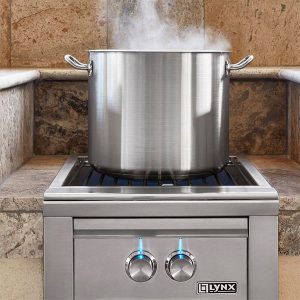Updated on March 12, 2023
In addition to being a kitchen necessity, the stove is what completes a kitchen. Many of us begin using the cooktop as soon as we can prepare our own grilled cheese or heat up some soup for ourselves. Moreover, who can forget the first time they were able to prepare their own hot dog or hamburgers?
If you’ve baked so many special cakes, anniversaries, and holiday feasts in your kitchen, you must have a good handle on your burner, right? Your favourite burner (and we all have a favourite) can be turned on without even looking at the controls. Is it possible that you’ve become too comfortable with your stove? It’s possible that you’ve been using your stove the wrong way all this time, and it’s costing you money.
From using the correct pots for the right burner to the health dangers of burning a stove the wrong way, it’s crucial to know what you’re dealing with while preparing your next meal. So let’s talk about what you’re doing wrong with your stove and what you can do to make it easier and safer to cook on the stovetop.
What Is a Power Burner on A Stove
For high-powered cooking like fast bringing food to a boil or searing meat, the largest stove burner is ideal. The “power burner” is the burner to use if you need a lot of heat, which is why it’s called that.

Which Burner Is Best for Boiling Water
- Ovente Infrared Burner.
- Duxtop Induction Cooktop.
- Elite Cuisine Electric Single Burner.
- Cusimaz Electric Hot Plate.
- IMUSA Electric Single Burner.
- Cuisinart Cast-Iron Double Burner.
- Aroma Single Burner Hot Plate.
Which Stove Burner Is Best
Using the medium-sized burners on your stove for most of your cooking is a good idea. When cooking, you’ll want to use your stove’s “simmer burner,” which is the tiniest of the burners.
Which is the best burner on the stove?
Benefits of Burner Stove
What Is the Use of Stove Burner?
Simply so, what is a simmer burner on a gas stove?
There are typically three sizes of burners on a gas range or cooktop: Cooking with a low flame and precision is the goal of a simmer burner. This burner should not be used to boil water. Burner with the highest possible output for rapid boiling.
What are the components of a gas stove? Range Glossary of Frequently Used Parts
- The heating element of a broiler. The heat for broiling is provided by the broiler element, which is located on top of the inside of an electric oven.
- The dashboard.
- The door light switch.
- Board for controlling an electronic oven.
- Limiter.
- a probe for measuring oven temperature.
- Circuit board for a relay.
- A switch on the surface of the element.
Secondly, how does a gas stove burner work?
A little gas valve connecting to the main gas line powers a burner component on a gas stove. You can increase the flow of gas and air by turning the heat knob to a higher level, and the flame gets bigger. Propane and natural gas are the two most commonly used fuels for gas burners.
Power Burners Vs. Atmospheric Burners
As far back as the 1820s, atmospheric burners were used in appliances for the first time. Despite their widespread use, power burners are becoming increasingly popular among appliance makers in order to improve performance and energy efficiency.

For the most part, the use of a power burner is determined by the application’s need for Btu/hr A power burner is more likely to be considered when the required Btu/hr range is bigger. Disagreements abound on whether atmospheric burners are appropriate for use above 100,000 Btu/h.
What’s the Difference?
The natural process of gas escaping from the aperture mixing with primary air is used in an atmospheric burner. In other words, there is no need for a mechanical blower to supply the air required for combustion.
A mechanical blower in a power burner propels air into the combustion chamber, allowing it to mix with more gas while maintaining the required gas-to-air mix ratio. It is possible to always regulate the amount of air by regulating the extra air, which is known to bring down the efficiency of the burner.
The experts at Wayne Combustion are here to help you find out how a power burner can benefit your particular application.

